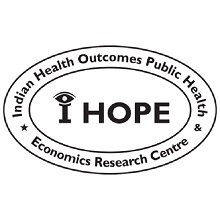
Vision Rehabilitation is recommended for people with no vision or low vision, both children and adults, to enable them to live as independently as possible. Ms. Beula Christy, PhD, Head, Institute for Vision Rehabilitation L V Prasad Eye Institute explains how vision rehabilitation can be customised to suit the specific needs of the people concerned.
What is Vision Rehabilitation?
Rehabilitation is an essential health service that focuses on the functioning of an individual to live as independently and actively as possible through a set of measures. Vision rehabilitation assists individuals who experience activity limitations and participation restrictions to achieve and maintain optimal functioning in interaction with their environments. Vision rehabilitation services have a pivotal role in mitigating the negative consequences of vision loss and enabling children and adults with visual impairment to meet their full potential.
You may like to listen to Ms. Beula Christy in a webinar on vision rehabilitation
For which conditions/situations is Vision rehab beneficial?
When conventional treatments - such as medical or surgical - fail to prevent or restore vision loss, patients often experience vision impairment. Different eye conditions may cause vision impairment under the broad categories of overall blurred vision, peripheral vision loss, and central vision loss. The severity of impairment may range from mild to severe, so its implications have immediate and long-term consequences in children and adults, such as lost educational and employment opportunities, lost economic gain for individuals, families, and societies, and impaired quality of life. Therefore, vision rehabilitation is essential for individuals of all age groups, from new-borns to the very elderly with irreversible vision impairment (blindness and low vision).
When should Vision Rehabilitation be started?
Vision rehabilitation maximizes visual functioning and helps individuals with vision impairment achieve their visual goals and improve the quality of their life. Individuals who gain rehabilitation early will have better outcomes and will reach a higher functional level, so the intervention should begin at the earliest possible once the diagnosis is made. Early identification & intervention is more crucial in children with vision impairment and developmental delays/disabilities as the brain is most adaptable to learning new compensatory skills in the early childhood years.
Benefits/ advantages of Vision Rehabilitation (VR)
The benefits of vision rehabilitation are for the individuals affected by vision loss, their immediate family members and friends, and society. At an individual level, it helps in improving the functional ability and enhances personal independence, which reduces the impact of disability-related concerns at the family and social levels.
Does VR result in reversing vision impairment or only arrests decline?
Vision rehabilitation is a remedial intervention that helps in improving one or more aspects of impaired or lost functions due to an irreversible eye condition. In older adults and elderly vision, rehabilitation helps prevent the loss of function due to vision loss and improves and maintains personal independence by learning new skills through compensatory skills. In children below the age group of 5 years, besides the support to enhance the overall development, vision stimulation and vision therapy) also helps improve the measurable vision functions.
What does a Vision Rehabilitation program look like?
A typical vision rehabilitation program is customized to the individual's needs to enhance function and personal independence. The comprehensive range of services offered includes assessment and prescription of low vision devices (such as magnifiers to help patients with low vision read again) to social, educational, and vocational rehabilitation through training or re-training. In addition, children from newborn to 5 years require unique services such as developmental assessments and interventions in cognitive, motor, and other sensory impairments.
What is the role of Occupational Therapy (OT) in low/ declining vision rehab
Occupational Therapy in vision rehabilitation is particularly recommended for the elderly who have concerns in performing their daily routines, such as reading, brushing, etc., that are contributed by vision and motor impairment. Additionally, OT is recommended for individuals who have issues in handling the low vision devices such as magnifiers because of their hand tremors, difficulty in holding objects, etc.OT is also recommended in children with special needs (e.g., Cerebral palsy, delayed motor development) to learn using adaptive gadgets (e.g., modified feeding spoons) to increase their functional abilities.
When should OT be prescribed and commenced
OT be prescribed and commenced the earliest possible, as and when the need is identified as explained above.
Benefits of OT in different scenarios
Vision rehabilitation is for anyone with vision loss ranging from mild impairment to total blindness that can't be corrected further through regular eyeglasses, medicine, and surgery. Macular degeneration, Cataracts, Glaucoma, and Retinal diseases such as diabetic retinopathy, Retinitis Pigmentosa, and Retinal detachment are some of the common eye conditions causing vision loss in adults. Vision loss may impact one or more visual functions such as visual acuity (<20/50), central or peripheral vision loss, reduced contrast sensitivity, glare, and light/dark adaptation.
The implications of vision loss are multidimensional, affecting one's lifestyle in almost all aspects. Beginning with psychosocial well-being issues, people with vision loss confront challenges related to performing day-to-day functional tasks, education, employment, mobility, and socialization. Vision rehabilitation plays a crucial role in mitigating these opposing challenges. A typical vision rehabilitation program is customized based on his/her eye condition and unique functional needs with an aim to improve personal independence.
Broadly the components of the vision rehabilitation program include:
Counseling and guidance: Through individual and family counseling, the primary focus is to help them cope with vision loss. The counselors help the individuals and families understand the medical condition's prognosis and the potential benefits of undertaking rehabilitation interventions. The impact of vision loss is multidimensional, affecting the person with impairment and the immediate family members, causing stress, anxiety, and depression.
Educational rehabilitation: Services focus on meeting the educational needs of children and young adults. Components of support include vision assessment for selection of the learning medium print Vs. braille, pre-braille, and braille activities, training on special adaptative gadgets such as Taylor frame & Abacus, counseling for career readiness, and much more.
Social rehabilitation: Services focus on enhancing personal independence in performing day-to-day tasks, thus maximizing the social inclusion of all age groups.
Intervention includes training on Orientation and Mobility through the sighted guide and cane techniques for indoor and outdoor safe navigation, training on personal grooming, money management, and safe home management for age-appropriate tasks task, including cooking, dusting, sweeping, ironing, needle threading, etc.
Economic rehabilitation: The services focus on assisting the working-age group of men and women with vision impairment to find financial independence through vocational guidance and various skills training such as computer training through assistive software JAWS & Magic, tailoring, and other crafts.
Low vision rehabilitation: Services focus on enabling individuals who have low vision and otherwise can't meet their visual demands to improve their function through a range of low vision devices, optical, non-optical, and electronic. For example, a Telescope can help view a black board/road signage very clearly. Similarly, a magnifier or electronic device can help in the reading text. A variety of low vision devices can help people with low vision live and work independently, efficiently, and safely.
Services for children:
Early intervention: Focuses on children ages between births to five years with developmental delays, thus lessening the effects of the condition. Services include developmental assessment to rule out the presence of developmental delay (motor, speech, and cognitive impairment), therapeutic intervention to overcome the developmental issues, and improve the functional ability to the maximum extent possible.
Functional Vision Assessment: Functional vision is assessed in various environments to determine the usefulness of residual vision for various functional activities like education, mobility, self-care, etc. Based on assessment results, customized training is imparted on visual skills such as awareness and attention to objects, fixation, focusing and localization, tracking, and scanning to help children make the best use of their vision.
Vision Stimulation: Vision is a learnt skill. Children born with eye diseases such as Retinopathy of Prematurity, Cerebral Visual Impairment, Syndromes, and other congenital conditions do not develop a vision by default unless they get a stimulating environment to use their vision. In such children, visual function and certain developmental outcomes improve in response to early visual training and environmental adaptation in an interactive context. Vision stimulation and vision therapy help in the brain's neuroplasticity to gain potential vision development.
Listen to the webinar on Vision Rehabilitation: https://youtu.be/uwOzSNB-VqQ

Contributed by Ms. Beula Christy, PhD, Head, Institute for Vision Rehabilitation L V Prasad Eye Institute







